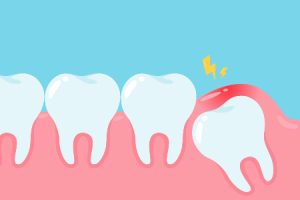 What are wisdom teeth?
What are wisdom teeth?
Wisdom teeth are the third set of molars (the largest in the mouth) that typically begin to appear in the late teenage years. However, everyone is different—some individuals may not get these teeth until their 20s or early 30s. Still others may have no wisdom teeth at all!
Why do they need to be removed?
They are simply too big for most modern people’s mouths to accommodate. From prehistoric times until the advent of modern dentistry, it was common for people to lose one or more adult teeth early in life. In those days, having an extra set of molars was beneficial as a final backup when teeth went missing. In modern times, people (luckily) keep almost all of their teeth well into adulthood.
Additionally, archeological records have shown that the human jaw has gradually shrunk over time as diet has shifted from tough, chewy, raw foods to primarily softer cooked foods. Nowadays, this means that people simply don’t have the room to fit these extra molars. As they began to emerge, instead of being helpful, they threatened to disrupt the surrounding teeth and damaged teeth alignment.
Furthermore, even those adults who keep their wisdom teeth may need them extracted later in life. That’s because these teeth are so hard to reach for proper brushing and flossing that they experience a greater occurrence of cavities and tooth decay.
How are wisdom teeth problems diagnosed?
Beginning around age 12, wisdom teeth are just one of the aspects monitored with routine dental X-rays. Your dentist will watch the progress as tooth buds start forming and the alignment begins progressing. That way, we can alert you to a developing problem long before there is no immediate threat.
Modern digital X-rays use approximately 80% less radiation than old film-based systems!

